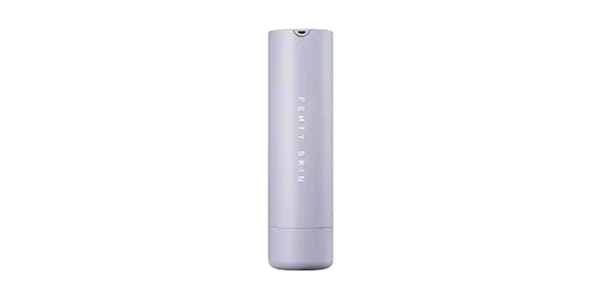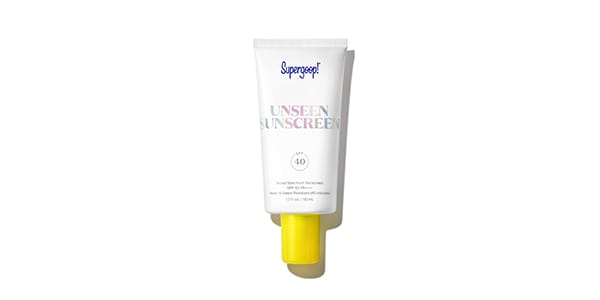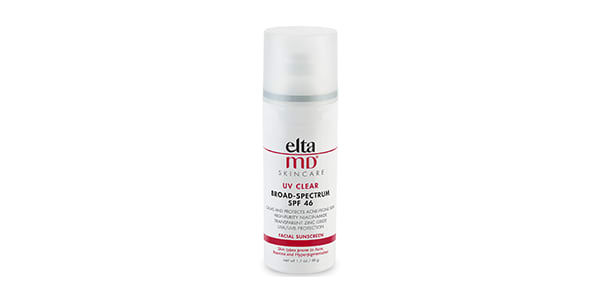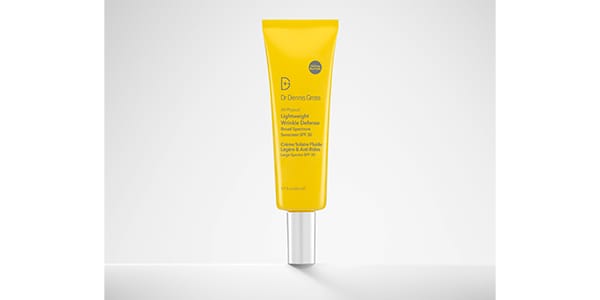 HydraFacial®
HydraFacial®Why Skin Cancer Awareness Needs To Include People Of Color
While skin cancer is not as common for people with darker skin, BIPOCs often experience more aggressive cases and lower survival rates due to late diagnoses. Here’s how to protect yourself.
May is Skin Cancer Awareness Month, which is an annual opportunity to educate the public on how to prevent and treat skin cancer (i.e. the most common type of cancer in the United States). Unfortunately, much of this education is centered on those with lighter skin tones, leaving people with darker skin out of the conversation.
It’s a symbiotic system: many BIPOC are not aware of their risk for skin cancer, while many medical professionals and medical journals do not adequately enlighten people of color about at-home screenings, annual skin checks with a dermatologist, or even what skin cancer can look like on darker skin. The result? A dangerous lack of knowledge on both ends of the spectrum.
And while it is true that people with lighter skin — types I, II, and III on the Fitzpatrick scale — are at a higher risk of developing skin cancer than types IV, V, and VI, people with darker skin have a higher risk of being diagnosed with skin cancer at a later stage. At that point, the cancer is often more aggressive and survival rates are lower.
The good news is that there are many things that can be done to prevent skin cancer. Here, two top dermatologists share what BIPOCs need to know about protecting themselves.
Skin Cancer 101
Skin cancer is the out-of-control growth of abnormal cells in the epidermis (read: the outermost layer of the skin). According to the Skin Cancer Foundation, skin cancer is usually caused by ultraviolet (UV) radiation from the sun or UV exposure in indoor tanning beds. The three most common types of skin cancer are:
- Basal Cell Carcinoma (BCC): The most common skin cancer in the United States, BCC usually develops after years of sun exposure.
- Squamous Cell Carcinoma (SCC): The second most common skin cancer, SCC can grow deep into the skin and cause disfigurement.
- Melanoma: The most dangerous form of skin cancer due to its ability to spread, the vast majority of melanomas are caused by the sun.
Basal cell carcinomas — specifically on the palms of the hands and soles of the feet — are most prevalent for BIPOCs, confirms Angela Lamb, MD, a board certified dermatologist and director of the Westside Mount Sinai Dermatology Faculty Practice in New York City. But that’s not to say melanoma isn’t also a concern.
As Onyeka Obioha, MD, a Los Angeles-based board certified dermatologist and skincare advisor at Glory Skincare, explains, melanoma forms from melanocytes (i.e. the skin cells that produce melanin pigment). While melanomas can be found anywhere on the body, people of color have higher rates of acral lentiginous melanoma (ALM), or melanoma of the palms, soles, and nailbeds.
Skin Cancer Prevention
No matter your skin color, lessening your risk of skin cancer involves three main factors:
- Daily sunscreen use
- Regular at-home skin checks
- Consistent visits to a dermatologist
Below is what you need to know about each prevention method:
1. Sunscreen
While melanin does provide natural protection from the sun (about eight to 13 intrinsic SPF, Dr. Lamb says), it’s not enough to fully protect you from damaging UV rays. Sunscreen needs to be applied everyday — rain or shine, winter or summer — and you need to make sure it has a high enough sun protection factor (SPF) to actually make a difference.
Like the American Academy of Dermatology (AAD), Dr. Lamb recommends at least SPF 30 for daily use and SPF 50 for times when you will be directly in the sun. “Make sure it says ‘broad spectrum’ and make sure it feels good on your skin,” she emphasizes. “The most important thing is something that you will actually wear.” While the sunscreens of yore were often greasy, uncomfortable, and gave darker skin people that dreaded white cast, many of the sunscreens on the market today are the complete opposite.
There is some debate over chemical versus physical (mineral) sunscreens, and Dr. Obioha personally prefers mineral formulas. “Mineral sunscreens that contain zinc oxide or titanium dioxide will provide the best protection,” she says. “I prefer mineral sunscreens because they do not contain any harmful chemicals that can be found in other forms of sunscreen.”
Additionally, your behavior can also help reduce your risk of skin cancer. During summer months, try to stay out of the sun during peak times (10 a.m. to 4 p.m.), wear a hat and sunglasses when in direct sunlight, and reapply your sunscreen every two hours or after getting wet.
2. At-Home Skin Checks
Monthly self-exams are important because, unlike most cancers, you can actually see skin cancer developing. Understanding the so-called ABCDEs of melanoma (asymmetry, border, color, diameter, and evolving) can help you with your checks, and you can also check out our guide to at-home skin cancer screenings.
While you should look at your entire body, people with darker skin need to pay extra attention to certain areas. “Skin cancer can develop on any part of the skin, [but] skin cancers on sun-protected sites occur more frequently in BIPOC as compared to in lighter skin types,” Dr. Obioha explains. These site include the:
- Scalp
- Eyes
- Mucous membranes (such as your mouth, genitalia, perianal skin)
- Nails
Unfortunately, most photos of skin cancer are of people with lighter skin, which leaves many BIPOC people confused on what to look for. Many skin cancers appear pigmented and brown on darker skin, while lighter skin sees cancer that looks pearly and pink, Dr. Obioha notes. Her advice? “Always remain aware of any changing, non-healing, or bleeding lesions, and look out for dark lines around and underneath the nails,” she shares. “When doing a skin cancer check at home, look at every aspect of your body, including the nails, mouth, palms, and soles of your feet.”
There are some online resources, including the American Society for Dermatologic Surgery and the American Academy of Dermatology, that have photos of Black, Latinx, and Asian people with skin cancer. When in doubt, it’s best to see your dermatologist for a proper examination, which leads us to...
3. Visits to Your Dermatologist
While visiting the dermatologist is often seen as an ‘extra’ or something only acne-stricken teens do, it’s important to set up a regular (read: at least annual) appointment with your derm. While there, you can show your provider any spots, bumps, or moles that you’re concerned about. If they feel that the area needs more attention, they can remove it and send the sample for a biopsy.
If you are diagnosed with skin cancer, treatment is usually straightforward — especially when it’s caught early. As Dr. Lamb explains, most skin cancers are removed via excision. Though rare, more serious types may require chemotherapy and radiation. If your treatment leaves a scar, you can consult your dermatologist or a plastic surgeon on how to minimize its appearance.
Since early detection is key, it’s important to keep your annual checkup even if you don’t think you have any problem spots. The Skin Cancer Foundation reports that late-stage melanoma diagnoses are more prevalent among Hispanic and Black people than non-Hispanic white people, so it’s always better to get a second opinion. Plus, you can also use that time to talk about other skin concerns you may have or treatments you’re interested in.
A Note on Vitamin D
Vitamin D is known for boosting bone strength and for assisting with the absorption of calcium, and it’s sometimes called the ‘sunshine vitamin’ because one of the easiest ways to get it is to bask in the sunlight. It is true that BIPOC may see their levels of vitamin D dip at certain times of the year due to their intrinsic protection from the sun, sunscreen usage, and extra layers of clothes.
One study found that most young and otherwise healthy Black people do not achieve appropriate levels of vitamin D at any time of the year. Another determined that, while about 42 percent of the U.S. population is vitamin D deficient, the rate rises to 70 percent in the Latinx population and 82 percent in the Black community. A vitamin D deficiency can present as fatigue, muscle weakness, and, in severe cases, thin, brittle, or misshapen bones.
This is not to say, however, you should skimp on sun protection. You can get vitamin D from your diet, and vitamin D-rich foods include salmon, tuna, egg yolks, mushrooms, and fortified foods like cereal, orange juice, and soy milk. Additionally, there are a number of vitamin D supplements on the market, but you should speak with your doctor before adding them to your routine. Your provider may recommend a blood test to check your vitamin D levels prior to starting a regimen.
Notable Sunscreens for BIPOCs
As we mentioned, sunscreen has come a long way since the greasy formulas of yesteryear that left the skin looking chalky. Below are six expert- and editor-approved formulas that meet the AAD and Dr. Lamb’s recommendation of being broad spectrum SPF 30 or higher.
Black Girl Sunscreen SPF 30

Created by a Black woman who was tired of buying sunscreens that didn’t properly care for melanated skin, this oxybenzone- and octinoxate-free sunscreen dries clear and has nourishing extras like avocado, jojoba, and sunflower oils. $19, blackgirlsunscreen.com
Fenty Skin Hydra Vizor Invisible Moisturizer Broad Spectrum SPF 30 Sunscreen

This moisturizer-sunscreen combo is refillable, makeup-friendly, and will hydrate your skin as much as it protects it from the sun. Oh, and if you want to wear it alone, it has a radiant finish. $35, sephora.com
Supergoop! Unseen Sunscreen SPF 40 PA+++

How do we know we’re in the future? We now have clear (yes, clear!) sunscreen. There is absolutely no risk of white cast here, and, if you wear makeup, this sunscreen will double as a primer. $34, sephora.com
EltaMD UV Clear Broad-Spectrum SPF 46

This fragrance- and oil-free formulation is perfect for those with acne, rosacea, or sensitive skin. The transparent hybrid formula (it contains both zinc oxide and octinoxate) also includes sodium hyaluronate to moisturize and lactic acid to reduce shine. $37, dermstore.com
Dr. Dennis Gross Skincare All-Physical Lightweight Wrinkle Defense Broad Spectrum Sunscreen SPF 30

This all-mineral sunscreen is powered by zinc oxide, and it’s also vegan, reef-safe, and comes in recyclable packaging. Insider tip: While slightly annoying, the key to using mineral sunscreens and avoiding a white cast is to rub it in completely and give it time to absorb before applying your makeup. $42, sephora.com
Neutrogena Hydro Boost Water Gel Lotion Sunscreen SPF 50

Summertime sun and sand can make dehydrated skin even drier and more irritated. This lightweight broad-spectrum gel formula is both soothing and hydrating (thanks to hyaluronic acid), and it has an invisible finish. $16, ulta.com
All products featured are independently selected by our editors, however, AEDIT may receive a commission on items purchased through our links.
More Related Articles
Related Procedures

AI Plastic Surgeon™
powered by'Try on' aesthetic procedures and instantly visualize possible results with The AI Plastic Surgeon, our patented 3D aesthetic simulator.
